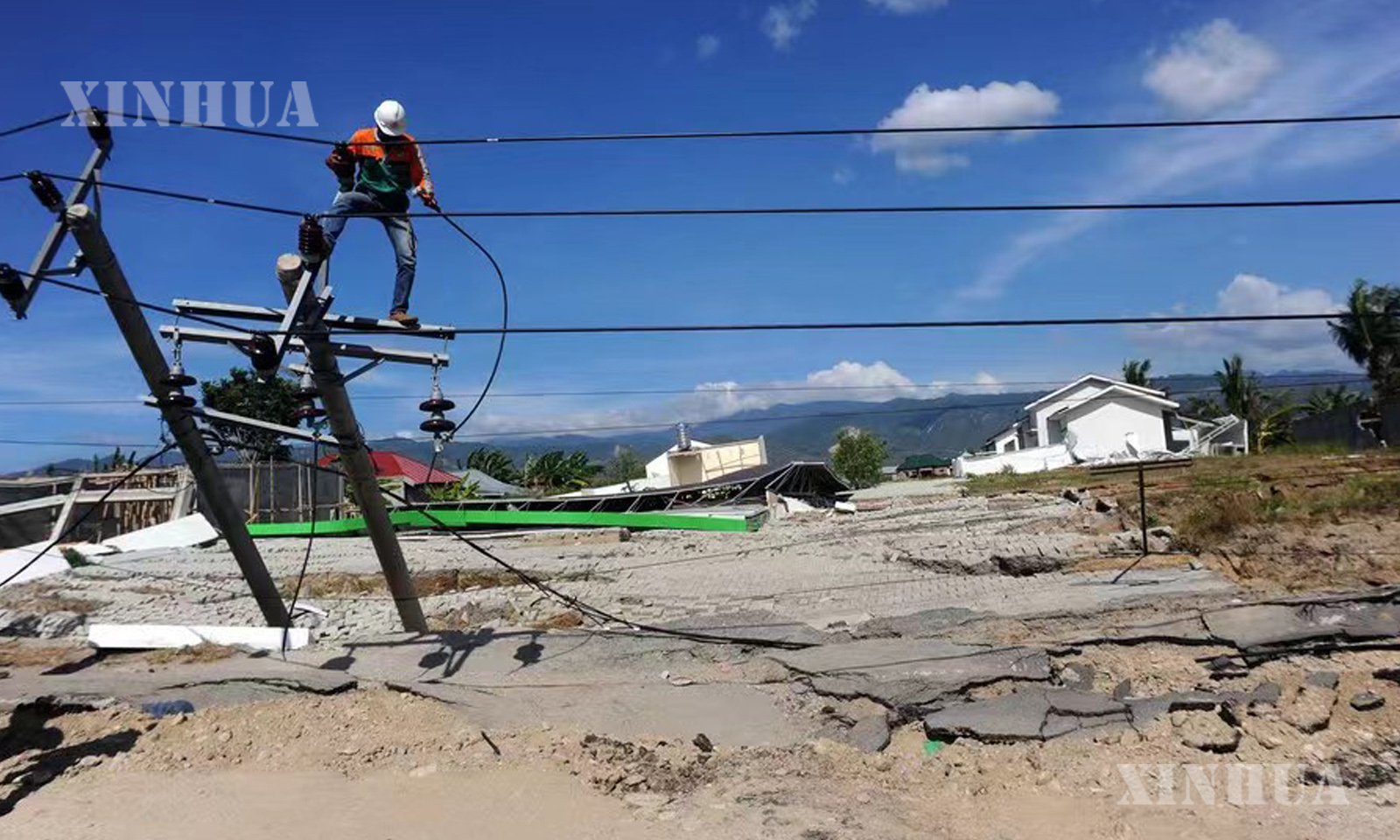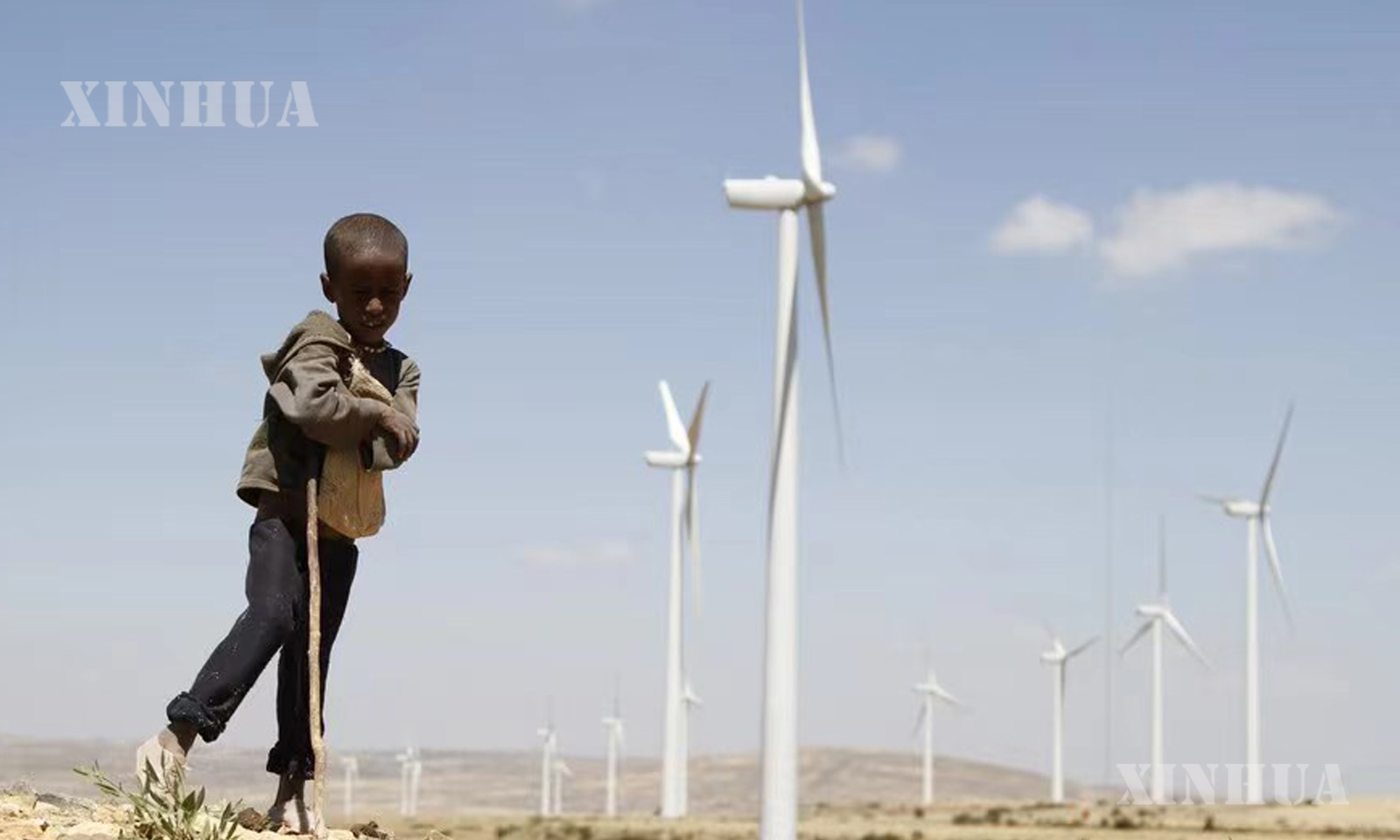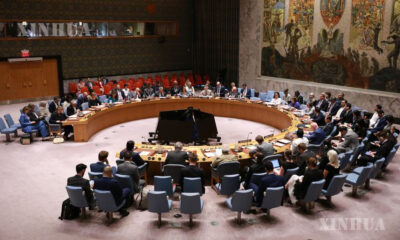International Organizations
ကပ်ရောဂါက ၂၀၃၀ ပြည့်နှစ်မတိုင်မီ တစ်ကမ္ဘာလုံး စွမ်းအင်ရရှိရေး ကြိုးပမ်းအားထုတ်မှုများကို အဟန့်အတားဖြစ်စေ

ကုလသမဂ္ဂ၊ ဇွန် ၂ ရက် (ဆင်ဟွာ)
ကိုဗစ်-၁၉ (COVID-19) ကပ်ရောဂါသည် တစ်ကမ္ဘာလုံးသို့ လျှပ်စစ်မီးရရှိရန်နှင့် ချက်ပြုတ်ရာတွင် အသုံးပြုသော သန့်ရှင်းသောလောင်စာများနှင့် နည်းပညာ ရရှိရေး ဆောင်ရွက်ချက်တွင် နှေးကွေးစေကြောင်း ဇွန် ၁ ရက်က ထုတ်ပြန်သည့် ကုလသမဂ္ဂမှ ကမကထပြုထားသော အစီရင်ခံစာအရ သိရသည်။

အီသီယိုးပီးယားနိုင်ငံ အာဒစ်အာဘာဘာမြို့မြောက်ဘက် ၇၈၃ ကီလိုမီတာအကွာ၊ Mekelle မြို့အနီး ၂၃၀ ကီလိုဗို့ Ashegoda လေစွမ်းအင်စီမံကိန်း ဓာတ်အားခွဲရုံတွင် အနားယူနေသော ကလေးငယ်တစ်ဦးအား ၂၀၁၃ ခုနှစ် အောက်တိုဘာ ၂၅ ရက်က တွေ့ရစဉ် (ဆင်ဟွာ)
ကမ္ဘာတစ်ဝန်း ပြည်သူ ၇၃၃ သန်းသည် လျှပ်စစ်မီးမရရှိသေးကြောင်းနှင့် ၂.၄ သန်းမှာမူ ၎င်းတို့၏ ကျန်းမာရေးနှင့် ပတ်ဝန်းကျင်ကို ထိခိုက်စေသည့် လောင်စာများ အသုံးပြု၍ ချက်ပြုတ်လျက်ရှိကြောင်း သိရသည်။
အဆိုပါ တွေ့ရှိချက်များသည် ၂၀၃၀ ပြည့်နှစ်တွင် လူတိုင်း သင့်တင့်လျောက်ပတ်သော ခေတ်မီစွမ်းအင်ရရှိရေး စဉ်ဆက်မပြတ် ဖွံ့ဖြိုးတိုးတက်မှု ပန်းတိုင် (SDG 7) ရရှိရန် ကမ္ဘာလုံးဆိုင်ရာ ကြိုးပမ်းအားထုတ်မှုများကို စောင့်ကြည့်သော Tracking SDG 7 : စွမ်းအင်တိုးတက်မှု အစီရင်ခံစာ၏ ၂၀၂၂ ခုနှစ် ထုတ်ဝေမှုမှ တွေ့ရှိထားချက်များဖြစ်သည်။
အဆိုပါ လေ့လာမှုကို အစိုးရများနှင့် မူဝါဒချမှတ်သူများကို ဆောင်ရွက်ရန် တိုက်တွန်းလျက်ရှိသည့် SDG 7 စောင့်ရှောက်သူအေဂျင်စီများဟု လူသိများသော ကုလသမဂ္ဂ အဖွဲ့များနှင့် မိတ်ဖက်အဖွဲ့များက ထုတ်ဝေထားခြင်း ဖြစ်သည်။
အသွားအလာကန့်သတ်မှုများနှင့် ထောက်ပံ့ကွင်းဆက်များ စသည့် ကိုဗစ်-၁၉ ရောဂါ သက်ရောက်မှုများကြောင့် SDG 7 ဆီသို့ တိုးတက်မှုအပေါ် ထိခိုက်မှုရှိကြောင်း သိရသည်။
အဆိုပါ အားနည်းမှုအရှိဆုံး ယင်းနိုင်ငံများမှာ အဆိုးဝါးဆုံးထိခိုက်မှုရှိခဲ့သည်။ ယခင်က လျှပ်စစ်မီး ရရှိခဲ့သော အာရှနှင့် အာဖရိတွင် ပြည်သူ သန်း ၉၀ နီးပါးသည် ၎င်းတို့၏အခြေခံစွမ်းအင်လိုအပ်ချက်အတွက်ပင် ငွေပေးချေနိုင်ခြင်းမရှိကြောင်း သိရသည်။
အာဖရိကန်လူမျိုးများသည် ကမ္ဘာပေါ်တွင် လျှပ်စစ်မီးရရှိမှုအနည်းဆုံးဖြစ်ပြီး ၅၆၈ သန်းမှာ လျှပ်စစ်မီ လုံးဝမရရှိကြောင်း၊ အာဖရိက ဆာဟာရဒေသခွဲတွင် လျှပ်စစ်မီးမရရှိသော ပြည်သူများမှာ ၂၀၁၈ ခုနှစ်တွင် ၇၁ ရာခိုင်နှုန်းရှိရာမှ ၂၀၂၀ ပြည့်နှစ်၌ ၇၇ ရာခိုင်နှုန်းအထိ မြင့်တက်လာခဲ့ကြောင်း သိရသည်။
ထို့ပြင် သန့်စင်သော ချက်ပြုတ်ရေးလောင်စာများနှင့် နည်းပညာများ ရရှိရေး တိုးတက်မှုများမှာ အထူးသဖြင့် အာဖရိက ဆာဟာရဒေသခွဲတွင် လူဦးရေတိုးတက်မှုနှင့် လုံလောက်မှုမရှိကြောင်း သိရသည်။
ပြန်လည်ပြည့်ဖြိုးမြဲစွမ်းအင်သည် စီးပွားရေးလုပ်ငန်းများနှင့် ထောက်ပံ့ကွင်းဆက်များ၌ ကပ်ရောဂါကြောင့် အတားအဆီးများဖြစ်ပွားနေသည့်ကြားမှာ တိုးတက်လာသော တစ်ခုတည်းသော စွမ်းအင်အရင်းအမြစ်ဖြစ်ကြောင်း အစီရင်ခံစာက ရှာဖွေတွေ့ရှိခဲ့သည်။
သို့ရာတွင် လျှပ်စစ်မီး အများဆုံးလိုအပ်လျက်ရှိသောနိုင်ငံများအနေဖြင့် နိုင်ငံတကာငွေကြေးစီးဆင်းမှု ဖြစ်ရပ်ကြောင့် နှစ်နှစ်ဆက်တိုက် အခြေအနေပိုမိုရွားစွာ ကျဆင်းခဲ့ကြောင်း သိရသည်။
SDG 7 တွင် စွမ်းအင်လုံလောက်မှု ရရှိရေး ရည်မှန်းချက်များ ပါဝင်သည်။ ၂၀၁၀ ပြည့်နှစ်မှ ၂၀၁၉ ခုနှစ်အထိ စွမ်းအင်ကဏ္ဍတွင် ကမ္ဘာလုံးဆိုင်ရာ နှစ်စဉ်တိုးတက်မှုများမှာ ပျမ်းမျှအားဖြင့် ၁.၉ ရာခိုင်နှုန်းခန့်ရှိကြောင်း၊ ရည်မှန်းချက်များ ပြည့်မီရန်နှင့် မြေပြင်ဆုံးရှုံးမှုကို ပြုပြင်ရန် လိုအပ်သောအဆင့်အနေဖြင့်မူ လျော့ကျနေကြောင်း သိရသည်။
SDG 7 ထိန်းသိမ်းစောင့်ရှောက်သူများမှာ IRENA နှင့် နိုင်ငံတကာစွမ်းအင်အေဂျင်စီ၊ ကုလသမဂ္ဂ စာရင်းအင်းဌာန၊ ကမ္ဘာ့ဘဏ်နှင့် ကမ္ဘာ့ကျန်းမာရေးအဖွဲ့တို့ဖြစ်သည်။
နိုင်ငံတကာ အသိုင်းအဝိုင်းနှင့် မူဝါဒချမှတ်သူများသည် SDG 7 တိုးတက်မှုရရှိရေး ထိန်းသိမ်းစောင့်ရှောက်ရန်၊ အားလုံးအတွက် သင့်တင့်မျှတသော၊ စိတ်ချရသော၊ ရေရှည်တည်တံ့သောနှင့် ခေတ်မီသော စွမ်းအင် ရရှိရေး ဆက်လက်လုပ်ဆောင်ရန် တိုက်တွန်းခဲ့သည်။ အကူအညီလိုအပ်မှုအရှိဆုံးနိုင်ငံများအပေါ် အာရုံစိုက်ရန် ဆက်လက်လုပ်ဆောင်သွားသင့်ကြောင်း အစီရင်ခံစာက ဆိုသည်။ (Xinhua)
…………………………………
(English Version)
Report: Pandemic hinders efforts to achieve universal energy access by 2030
Source: XinhuaEditor: huaxia2022-06-02 02:51:30
UNITED NATIONS, June 1 (Xinhua) — The COVID-19 pandemic has slowed the progress towards universal access to electricity and clean cooking fuels and technology, according to a UN-sponsored report published on Wednesday.
Globally, 733 million people lack access to electricity, and 2.4 billion still cook using fuels that are harmful to their health and the environment.
The findings are from the 2022 edition of Tracking SDG 7: The Energy Progress Report, which monitors global efforts to achieve the Sustainable Development Goal (SDG 7) of ensuring affordable modern energy supply for everyone by 2030.
The study was produced by UN entities and partners, known as the SDG 7 custodian agencies, who urge governments and policymakers to step up action.
The impacts of COVID-19, such as lockdowns and supply chain disruptions, have affected progress towards SDG 7.
Those countries that are most vulnerable have been hit hardest. In Asia and Africa, almost 90 million people who previously had access to electricity cannot afford to pay for their basic energy needs.
Africans remain the least electrified in the world, with 568 million without access to electricity. The percentage of people without electricity in Sub-Saharan Africa rose from 71 percent in 2018 to 77 percent in 2020, while most other regions declined.
Moreover, the progress in access to clean cooking fuels and technologies, particularly in Sub-Saharan Africa, wasn’t enough to keep pace with population growth.
The report discovered that renewable energy was the only energy source that grew during the pandemic despite continued disruptions in economic activity and supply chains.
Despite this, countries most in need of electricity have been left behind – a situation exacerbated by the fact that international financial flows declined for the second consecutive year.
SDG 7 also includes targets towards energy efficiency. From 2010 to 2019, global annual improvements in energy intensity averaged around 1.9 percent, which is well below the levels needed to both meet the targets and to make up for lost ground.
The SDG 7 custodians are IRENA and the International Energy Agency, the United Nations Statistics Division, the World Bank, and the World Health Organizat
International community and policymakers were urged to preserve gains towards SDG 7, and to continue working towards affordable, reliable, sustainable, and modern energy for all. The focus should remain on countries most in need of assistance, according to the report. ■
Photo 1 : File photo taken on Oct. 5, 2018 shows a worker checking electricity installation in Palu, Central Sulawesi, Indonesia. (Xinhua/Agung Kuncahya B.)
Photo 2 : File photo taken on Oct. 25, 2013 shows a child resting at the 230 kilo volt Ashegoda Wind Power Project substation near Mekelle Town, 783 km north of Addis Ababa, capital of Ethiopia. (Xinhua/Michael Tewelde)






